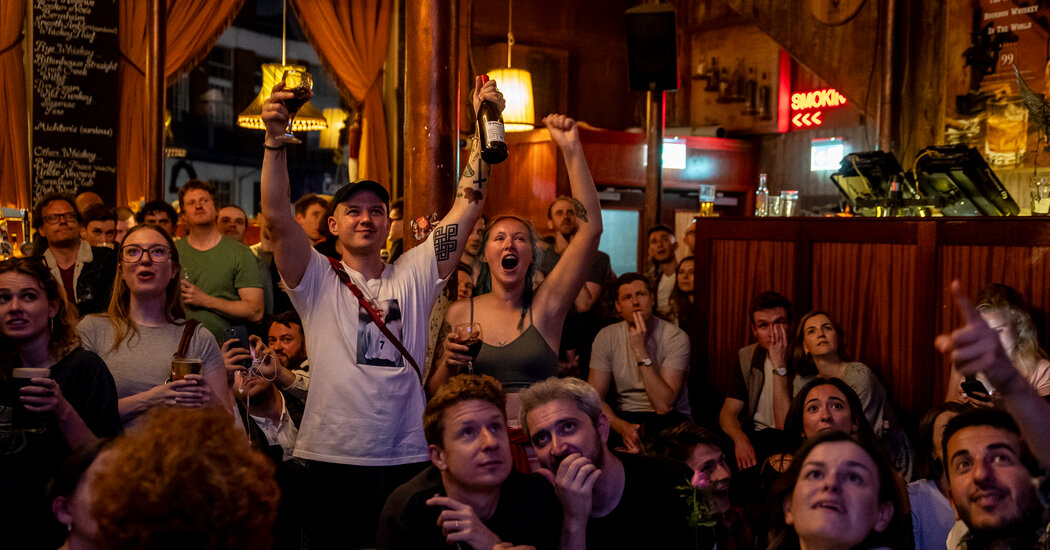Table of Contents
A landslide victory for Britain’s centre-left Labour Party marks a pivotal moment in the country’s politics, returning to power a party that just five years ago suffered its worst defeat since the 1930s.
Keir Starmer, the Labour leader, becomes prime minister with a majority of about 170 seats, almost as large as the majority Tony Blair won in 1997.
As Labour swept to victory, the Conservative Party suffered its biggest loss in its history, winning just 120 seats, down from its previous worst result in 1906, when it won 156 seats. A new populist, anti-immigration party, Reform, burst onto the scene, winning a significant share of the vote despite only winning a handful of seats. And there were notable gains for the centrist Liberal Democrats.
Here are five tips for understanding the results.
The Labor Party is back
A party that was crushed in the 2019 general election is not only back in power, but is now the dominant force in British politics. Mr Starmer has purged his party of the hard left and moved Labour to the centre, and he campaigned on a simple message: “Change.”
Millions of voters returned to Labour, but the party’s share of the total vote was modest, at around 34 per cent, a warning sign for the new government.
Labour’s success was achieved by its ability to efficiently secure votes in the areas needed to win key parliamentary seats, which was enough to secure a convincing victory.
In his first speech to voters as Labour’s results were announced, Mr Starmer said the country “has a chance to reclaim its future after 14 years”.
“People across the country will wake up to the news that a burden has been lifted from the shoulders of this nation,” he added.
Reform was another winner
Nigel Farage, an ally of Donald J. Trump, had tried seven times to become a member of Parliament, but had failed each time.
Until now.
Mr Farage won the race in Clacton, a neglected coastal area in the east of England, and his new Reform party won a significant share of the vote, around 14 per cent, in the general election across the country, making it the third-largest party on that measure.
Under the British electoral system, however, that translated into just four confirmed seats for Reform in parliament. That would still give the party a foothold in British politics, unnerving the Conservatives and giving Mr Farage a platform for his anti-immigration agenda.
In his victory speech in the early hours of Friday morning, Mr Farage made his ambitions clear, declaring: “There is a huge gap in the centre-right of British politics and it is my job to fill it.”
As the US presidential election approaches, Mr Farage’s relationship with Mr Trump is likely to remain a focus of attention. Early on Friday, Mr Trump said congratulated his populist allyand called Mr Farage’s election victory in his seat a “major VICTORY.”
The Conservatives were cornered on all sides
In 2019, the Tories campaigned on “Get Brexit Done,” winning votes from a broad swath of voters in the south and in traditionally Labour-supporting, deindustrialized areas of the north and the Midlands. This time, that coalition collapsed spectacularly. In the south, the Conservatives lost seats to the Liberal Democrats, a centrist, pro-European party. In the north, Labour regained some of its old strongholds.
But the Conservatives were also badly damaged by Reform, which split the right’s support and delivered enough votes to cost them a significant number of seats. Although the results were devastating for the Tories, and several ministers were among the losers, they were not as bad as the disaster scenario of fewer than 100 seats that some pollsters had predicted.
The Liberal Democrats had a great evening
In 2015, voters punished the Lib Dems for joining an austerity-minded Conservative-led coalition government, reducing them to just eight lawmakers. It has been a long, slow road to recovery since then. In that election, the Lib Dems were relentless in targeting areas, particularly in the south of England, where they were well-placed to defeat Conservative candidates. The party’s leader, Ed Davey, ran a spirited campaign and was also vocal about his role in caring for his disabled teenage son.
His reward is that he will regain around 71 seats and restore the party’s status as Britain’s third-largest party in terms of number of lawmakers, a position the Lib Dems had previously lost to the Scottish National Party.
Turnout fell
Although voters overwhelmingly voted to ban the Conservatives, turnout was low, with only 60 percent of eligible voters casting their ballots, the BBC reported.
That would make it the second lowest turnout for a British general election since 1885, after the 2001 vote, when 59 percent of the vote turned out.
The low figure reflects the mood of an electorate that seemed frustrated with the previous government but hardly optimistic about the next. It also pointed to the challenge facing the new Labour government, which will have to get to work quickly if it is to restore disillusioned voters’ faith in mainstream politics.
Megan Specia contributed to the reporting.


